Related Research Articles

The Red Orchestra was the name given by the Abwehr Section III.F to anti-Nazi resistance workers in Germany in August 1941. It primarily referred to a loose network of resistance groups, connected through personal contacts, uniting hundreds of opponents of the Nazi regime. These included groups of friends who held discussions that were centred on Harro Schulze-Boysen, Adam Kuckhoff and Arvid Harnack in Berlin, alongside many others. They printed and distributed prohibited leaflets, posters, and stickers, hoping to incite civil disobedience. They aided Jews and resistance to escape the regime, documented the atrocities of the Nazis, and transmitted military intelligence to the Allies. Contrary to legend, the Red Orchestra was neither directed by Soviet communists nor under a single leadership. It was a network of groups and individuals, often operating independently. To date, about 400 members are known by name.
The Lucy spy ring was an anti-Nazi World War II espionage operation headquartered in Switzerland and run by Rudolf Roessler, a German refugee. Its story was only published in 1966, and very little is clear about the ring, Roessler, or the effort's sources or motives.

Rudolf Roessler was a Protestant German and a dedicated anti-Nazi. During the interwar period, Roessler was a lively cultural journalist, with a focus on theatre. In 1934, Roessler became stateless by Germany and as a political refugee, moved to Lucerne in Switzerland. There he established a small anti-Nazi publishing firm in Lucerne known as Vita Nova that published Exilliteratur by fellow exiled writers. Late in the summer of 1942, Roessler ran the Lucy spy ring, an anti-Nazi Soviet espionage operation that was part of the Rote Drei while working for Rachel Dübendorfer through the cut-out Christian Schneider (editor). Roessler was able to provide a great quantity of high-quality intelligence, around 12,000 typed pages, sourced from the German High Command of planned operations on the Eastern Front, usually within a day of operational decisions being made. Later in the war, Roessler was able to provide the Soviet Union with intelligence on the V-1 and V-2 missiles. During the Cold War, Roessler reactivated his network and he spied on NATO countries in Western Europe under orders from the military intelligence services of the Czechoslovak Republic, until he was arrested by the Swiss authorities and convicted of espionage in 1953.

Alexander Allan Foote was a radio operator for a Soviet espionage ring in Switzerland during World War II. Foote was born in Liverpool, and raised mostly in Yorkshire by his Scottish born father and English mother.

The Super League is a Swiss professional league in the top tier of the Swiss football league system and has been played in its current format since the 2003–04 season. As of March 2024, the Swiss Super League is ranked 12th in Europe according to UEFA's ranking of league coefficients, which is based upon Swiss team performances in European competitions. The 2023–24 season will be the 127th season of the Swiss top-flight, making it the longest continuously running top-flight national league.
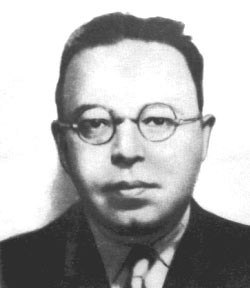
Alexander Radó, also: Alex, Alexander Radolfi, Sándor Kálmán Reich or Alexander Rado, was a Hungarian cartographer who later became a Soviet military intelligence-agent in World War II. Radó was also a member of the resistance to Nazi Germany, devoted to the service of the so-called Red Orchestra, the Soviet espionage and spy network in Western Europe between 1933 and 1945. Within the Red Orchestra, he headed the Switzerland-based Red Three group, one of the most efficient components of the Soviet intelligence network.

Science and technology in Switzerland play an important role in the Swiss economy, which has very few natural resources that are available in the country. The Swiss National Science Foundation, mandated by the Federal government, is the most important institute for promoting scientific research.
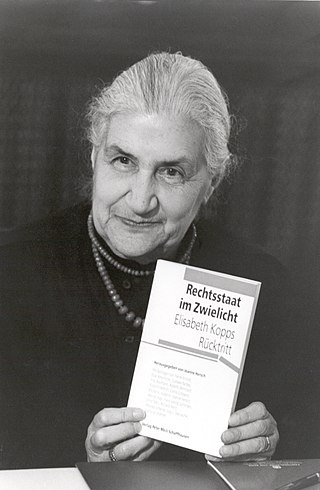
Jeanne Hersch was a Swiss philosopher of Polish-Jewish origin, whose works dealt with the concept of freedom. She was the daughter of Liebman Hersch.
The West Switzerland Company was a railway company in Switzerland, formed 1854 and absorbed into the Western Swiss Railway in 1872. The OS built a railway network in western Switzerland and connected with France via Geneva in 1858, although Switzerland's first railway was the French Strasbourg–Basel Railway, which connected Basel with Strasbourg, France in 1844.
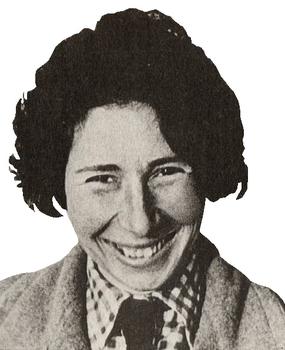
Ursula Kuczynski, also known as Ruth Werner, Ursula Beurton and Ursula Hamburger, was a German Communist activist who spied for the Soviet Union during the 1930s and 1940s, most famously as the handler of nuclear scientist Klaus Fuchs. She moved to East Germany in 1950 when Fuchs was unmasked, and published a series of books related to her espionage activities, including her bestselling autobiography, Sonjas Rapport.

Biel/Bienne railway station serves the bilingual municipality of Biel/Bienne, in the canton of Bern, Switzerland.
Leon Charles Beurton was an English Communist who worked as an agent for the Soviet intelligence services.
Susan M. Gasser is a Swiss molecular biologist. From 2004 to 2019 she was the director of the Friedrich Miescher Institute for Biomedical Research in Basel, Switzerland, where she also led a research group from 2004 until 2021. She was in parallel professor of molecular biology at the University of Basel until April 2021. Since January 2021, Susan Gasser is director of the ISREC Foundation, which supports translational cancer research. She is also professor invité at the University of Lausanne in the department of fundamental microbiology. She is an expert in quantitative biology and studies epigenetic inheritance and genome stability. Recipient of multiple swiss and European awards, she was named member of the US Academy of Sciences in 2022.

Margrit Rainer born as Margrit Rosa Sandmeier was a Swiss comedian, radio personality, and stage and film actress starring usually in Swiss German language cinema and television and stage productions.
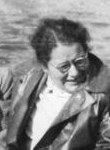
Margarete "Grete" Wittkowski was a German economist and politician. Between 1961 and 1967 she served as deputy chair of the East German Council of Ministers, the only woman ever to hold this post. Between 1967 and 1974, she served as President of the East German National Bank.
The Red Three was the Switzerland section of the so-called Red Orchestra. It was established and maintained by Soviet Military Intelligence Staff Division 4.
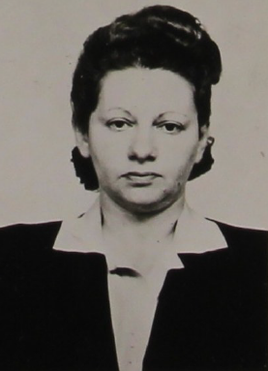
Rachel Dübendorfer was an anti-Nazi resistance fighter. During the Second World War, her codename was Sissy, and she was in a section of the Red Three Swiss resistance movement.
The history of the Jews in Geneva dates back to at least the Middle Ages. Geneva is the only place in present day Switzerland where Jews had to live in a ghetto. It was not until the 19th century that Jews were granted freedom of establishment, but numerous Jews were able to live in Carouge towards the end of the 18th century. Today, Geneva is one of the Swiss cities where Judaism is most prevalent and is home to diverse Jewish communities and establishments.
Ernst Johann Hausamann was a Swiss photographer, businessman, and freemason who later became an intelligence officer.
References
- 1 2 "Todesfall: Schatz Margarete". 16 October 2017. Retrieved 2 May 2022.
- 1 2 3 4 5 6 7 8 9 10 11 Paul L. Kesaris, ed. (1986). "Personalities of the Rote Kapelle: Margaret Bolli (alias Rosa, aka Schatz-Bolli and Schwarz-Bolli". The Rote Kapelle .... Digitised 2014. Margaret Bolli's potted biography appears on page 266, which some online search functions may identify as page 286 due pagination misalignment, presumably at digitisation. United States. Central Intelligence Agency & Frederick, Md.: University Publications of America inc. (The Rote Kapelle: the CIA's history of Soviet intelligence and espionage networks in Western Europe, 1936-1945). pp. 166–167, 181–182, 212, 229 266. ISBN 978-0-89093-203-2.
- ↑ Gabriel Heim [in German]. "Secret agents at Lake Geneva". The Soviets received vital information from Switzerland during World War II. The spies of the ‘Red Three’ knew exactly what Hitler was up to. Swiss National Museum / Landesmuseum Zürich. Retrieved 2 May 2022.
- 1 2 3 4 5 6 7 Michael Grimmer (29 May 2019). "Die Funker Kompanie 7 (Fk Kp 7) der Schweizer Armee im II. Weltkrieg" (PDF). Der Artikel versucht eine Annäherung an die Geschichte zum Einsatz des ersten Abhorch- und Peildienstes der Schweizer Armee während des Aktivdienstes mit Blick auf das politische Zeitgeschehen. «Historisches Armeematerial Führungsunterstützung (HAMFU), Thun . Retrieved 2 May 2022.
- 1 2 3 4 5 6 7 ""Werther hat nie gelebt"". Zum erstenmal hat ein kommunistischer Agentenchef über seine konspirative Arbeit im Westen berichtet: Der ungarische Geographie-Professor Sándor Radó enthüllt Erfolge und Mißerfolge seiner Spionage-Organisation, die im Zweiten Weltkrieg von der Schweiz aus Hitlers Militär- und Staatsapparat ausforschen sollte. Die Geschichte der Radó-Gruppe, vom SPIEGEL mit Hilfe zusätzlicher Dokumente rekonstruiert, widerlegt die These westdeutscher Historiker, Radós Agenten hätten entscheidend zum Sieg der Roten Armee beigetragen. Der Spiegel (online). 9 July 1972. Retrieved 2 May 2022.
- ↑ James Gannon (2001). ""Lucy", Man of Mystery". Stealing Secrets, Telling Lies: How Spies and Codebreakers Helped Shape the Twentieth Century. Brassey's inc., Washington D.C. pp. 157–158. ISBN 9781612342078 . Retrieved 2 May 2022.
- 1 2 Jean-Luc Agassis (December 2004). "Lucy, Rado, Pakbo ou l'espionnage en Suisse durant la seconde guerre mondiale" (PDF). Pol Cant Info - Bulletin de la Police cantonale vaudoise. Le comité de rédaction du Pol Cant Info, l'agence Tasmanie et l'imprimerie Corbaz, Lausanne. pp. 6–8. Retrieved 2 May 2022.
- ↑ "Alexander Foote (KV 2/1611-1616)". 'Rote Drei' agent files. The National Archives, Kew. Archived from the original on 2 December 2008. Retrieved 2 May 2022.
- ↑ Alexander Foote (23 February 1954). "»Lucy« Contra Okh". Aus dem Kriegstagebuch eines Sowjet-Spions. Der Spiegel (online). Retrieved 2 May 2022.
- ↑ Marcy Goldberg. "Politisches Kino par Excellance: Heidi Specogna" (PDF). REX Filmprogramm März 2020. Kino REX Bern. pp. 7–8. Retrieved 3 May 2022.
- ↑ Jean Michel Jakobwicz (October 2018). "Un nid d'espions route de Florissant" (PDF). Récits d'antan, histoires d'aujourd'hui .... 14 octobre 1943, 2 h du matin. Dans le jardin d’une villa située à la route de Florissant, à quelques pas de l’actuel Restaurant du Vallon, un étrange manège se déroule. Dans la villa, tout le monde semble dormir. Seule une faible lumière éclaire l’une des mansardes. Dans cette pièce, une femme est penchée sur un étrange appareil posé sur une petite table. Il s’agit d’un émetteur ondes courtes qui permet de transmettre des messages en morse. la ville de Chêne-Bougeries (Le Chenois - Organe officiel des communes de Chêne-Bougeries, Chêne-Bourg et Thônex). pp. 6–7. Retrieved 3 May 2022.
- 1 2 Alain Leclercq (29 November 2018). 1939-1945: Espionnage et guerre secrète (in French). Éditions Jourdan. p. 86. ISBN 978-2874665141.
- ↑ Christian Favre (17 July 2008). "Alexande Rado et son réseau ... Comment furent découverts les "trois rouges" ... Les personnes arrêtées gardent le silence". La Suisse et la guerre 1933 - 1945 / Werner Rings (discussion/review). Livres de Guerre. Retrieved 3 May 2022.
- ↑ Maurice Meylan (29 May 2000). "Jacques Chamorel". Dictionnaire historique de la Suisse (DHS), Bern (in French). Retrieved 4 May 2022.
- ↑ Hans Bühler. "Funk- und Spionage in der Schweiz im 2. Weltkrieg (1939-1945)". studylibde.com. Retrieved 4 May 2022.
- ↑ Hermann Wichers (27 October 2009). "Otto Pünter" (in German). Historical Dictionary of Switzerland. Archived from the original on 30 July 2019. Retrieved 11 April 2020.
- ↑ "We have been informed that the following 62 members have crossed the threshold of death. In their remembrance we are providing this information for their friends ... Margarete Schatz Therwil (ch), 13 October 2017" (PDF). Anthroposophy Worldwide No. 12/17. General Anthroposophical Society, Dornach (SO). December 2017. p. 23. Retrieved 4 May 2022.
- ↑ "Deckname: Rosa". Switzerland, March 1993: Documentary, 85 min. Swiss Films Genève/Zürich. Retrieved 4 May 2022.
- ↑ Ulrich Wendt (1994). Deckname: Rosa (Heidi Specogna) (PDF). Stroemfeld Verlag: Cinema 40 unabhängige Schweizer Filmzeitschrift, Basel. pp. 224–225. ISBN 9783878778943 . Retrieved 4 May 2022.